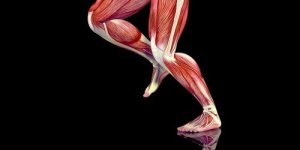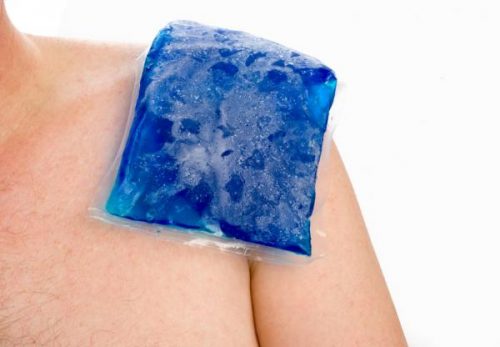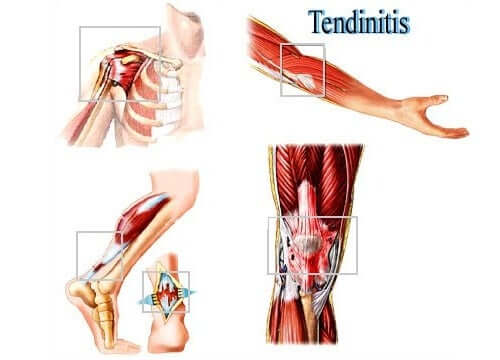Treatment of Soft Tissue Injuries

Soft tissue injuries occur in the soft parts of the musculoskeletal system. This system consists of tendons, ligaments, and muscles. Muscles are comprised of an assembly of fibers, which can shorten, shrink, and stretch due to their elasticity.
On the other hand, tendons are the parts of muscles that join the muscle and bone. The tendons transmit energy to the bone to cause movement.
In addition, ligaments are similar in structure to tendons. However, their job is to bind and stabilize the components that form a joint. Soft tissue injuries are classified into two categories: acute and overuse.
Acute soft tissue injuries

Sprain
A sprain is ligament stretching and/or tearing. The body parts that are most likely to suffer sprains are ankles, knees, and wrists. According to their severity, they’re classified as:
- Grade 1 or minor: Slight stretching occurs, as well as slight damage to the ligament fibers
- Grade 2 or moderate: An incomplete ligament tear
- Severe (Grade 3): Total ligament tear that causes instability
Although the intensity varies, pain, bruising, swelling, and inflammation are common in all three grades of sprains.
Strain
A strain is a soft tissue injury that’s often caused by overuse, stretching, or extreme effort. Strains may range from a single stretch to a partial or complete tear in the combination of muscle and tendon. These are the most common symptoms of a strain:
- Muscle spasms
- Cramps
- Muscle weakness
- Inflammation
You should also read: Heal a Sprained Ankle with Complementary Remedies
Bruise
A contusion or bruise is the result of an external force or blow. Due to the breakage of blood vessels, color change occurs. It can even limit motion.
Treatment of acute soft tissue injuries
The treatment varies, depending on the type and severity. When an acute soft tissue injury occurs, the initial treatment that’s applied corresponds to the RICE protocol: rest, ice, compression, and elevation.
Taking a break from the activity that caused the injury is important, along with the application of ice or cold compresses for 20 minutes, several times a day. Furthermore, to prevent inflammation, experts advise wearing an elastic compression bandage and elevating the injured limb above the heart.
The treatment of minor sprains is also RICE. However, moderate sprains often require an immobilization period and severe sprains may even require surgery to repair the injury.
As for strains, experts also recommend applying rest, ice, compression, and elevation. You should follow this protocol, along with simple exercises to relieve the pain and restore mobility. Most mild strains respond well to the RICE protocol.
Soft tissue overuse injuries

Tendonitis
This soft tissue injury is inflammation or irritation of the tendon. Typically, it occurs due to a series of repeated efforts that affect the tendon. Typical symptoms of tendonitis are swelling and pain that worsens with activity.
This article may also interest you: How to Relieve Tendonitis with Very Effective Natural Solutions
Bursitis
Bursae are small gelatinous bags that are located around the shoulder, elbows, hip, knees, and ankles. In this sense, they contain a small amount of liquid and are located between the bones and soft tissues. Thus, they act as cushions to reduce friction. Bursitis is inflammation of a bursa. This condition occurs as a result of small repeated efforts.
Treatment of overuse injuries
Experts recommend rest, anti-inflammatory drugs, and exercises to improve flexibility to treat tendonitis. If the swelling persists, it can cause significant damage to the tendon, which may require surgical treatment.
You can relieve bursitis by changing your activities. Also, you need to take anti-inflammatory medications. If you don’t improve, it may be necessary to remove the fluid from the bursa.
All cited sources were thoroughly reviewed by our team to ensure their quality, reliability, currency, and validity. The bibliography of this article was considered reliable and of academic or scientific accuracy.
-
Saavedra Lozano, J., Santos Sebastián, M., González, F., Hernández Sampelayo Matos, T., & Navarro Gómez, M. . (2011). Infecciones bacterianas de la piel y tejidos blandos. In Protocolos de la AEP: Protocolos de Infectología.
-
C.L Rodrígues Pérez, D.J. Fernández Gutiérrez, J.A. Ruiz Caballero, J.F. Jiménez Díaz, M. E. B. O. (2005). Tratamiento del esguince de tobillo. XIX JORNADAS CANARIAS DE TRAUMATOLOGIA Y CIRUGIA ORTOPEDICA. https://doi.org/10.1016/S0048-7120(04)73454-4
-
Parker, R. H. (2015). Bursitis. In Clinical Infectious Disease, Second Edition. https://doi.org/10.1017/CBO9781139855952.079
This text is provided for informational purposes only and does not replace consultation with a professional. If in doubt, consult your specialist.








